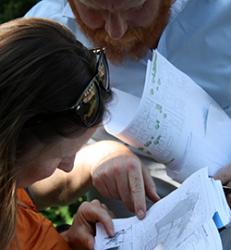The Mistra Urban Futures project 'Shared city - divided city' (”Dela[d] stad”) and its follow-up by the three main cities in Sweden, 'Cities in collaboration' (”Storstäder i samverkan”) show exiting, even revolutioning results. Researchers Ann Legeby of the Royal Institute of Technology (KTH) and Lars Marcus of Chalmers University of Technology (with colleagues at KTH and city officials) show that local councils often have the right visions and objectives to counteract segregation and differences in opportunities for people, but that these are not implemented in practical spatial planning and construction, quite the contrary: When construction actually takes place in the urban area, the result is often less cohesion, less of a mixed city, more segregation.
How then do you build cities and towns so that the objectives are fulfilled, so that this unwanted development is stopped and turned in the right direction? These research and practice projects look at the urban area as a system: They look at the connections, not the objects, the parts. They look at the functional form of the city, not its symbolic – that is, what it does, not what it looks like. The city constitutes a spatial capital that can be invested in, or squandered. When cities are built, the resources are allocated to different locations. The essential here is that good locations can be created in the process – or not. Previously good locations can even be destroyed. The number of good locations is not fixed, it depends on how the city is planned and built. The functional form matters; it affects the relationships between people, as well as between people and activities. Housing, traffic, services, enterprise, etc. form an entity, which is all about interplay in the public space, about accessibility, movment patterns, locations, etc. The focus must hence be on building the city, not just housing, office space and shopping areas.
The fundamental questions are: Who live alongside each other? Who share the public space? What resuorces are within reach? The projects show that spatial form affects the opportunities for the inhabitants of the different city neigbourhoods. Particularly vulnerable areas often have a disadvantageous spatial form (and location). The accessiblity to the resources of the city is generally much less favourable (public and commercial services, facilities, employment, etc.), and to boot they often receieve a lesser part of the investments made in relation to other areas. The spatial planning of the city therfore influences the possiblities for livelihoods and peoples' connections to society as a whole. It can, when things go wrong, separate people, activities and functions.
On instance is the layout of the late modernist housing area of Bergsjön in Gothenburg: The connection between its different parts is poor, and it is equally badly connected to the neigbouring Kortedala and Partille. The buildings turn away from the thoroughfares, and the passages where most people are in motion. The access to employment and services is relatively low. This kind of planning does not create good locations for commerce and enterprise, nor for meeting-places for poeple.
The city constitutes a spatial capital that can be invested in
Submitted by maintainer on 01/08/2016 - 11:14.
Disqus Comments







